Address?
Twenty20 & Co Inc


Jun 4, 2025
"Every little thing matters. The devil is in the details."
stuff you'll need for your insurance policy

elements

|
|
Jun 4, 2025 |
|
|
Address? Municipality, State / Province |
|
|
Property Type? |
|
|
Weather conditions? |
|
|
People in Attendance |
|
|
Inspectors Name? |
|
|
Client(s)Name? Client Current Address? Client Email? 8888888888 |
|
|
Agent(s) Name? |
|
2:27PM Start Time |
method

(Eg. FULL Report * Last Page) From the disciplined approach of gathering information & curating, to the mixture of photos & clear narratives. The Method was founded on pure construction experience.
Designed to CONNECT you with the information to help make an informed decision & built to do one thing really well:
Drive the point home.
"Tell the story, share the knowledge & inspire action"

stuff.
A home inspection is kind of like an annual check-up at the doctor. It’s used to make sure things are working properly & it can be useful in spotting things that might eventually become a problem.
Disclaimers are boring This outline is meant to guide homeowners on what to look for if you decide not to hire a professional. For full clarity, I’ve attached the official Standards of Practice, which outline what a licensed home inspector actually does during a proper inspection. Use this guide as a starting point only. HIT THE LOGO BELOW.
If you are reading this then obviously the details matter to you. You’d make a great home inspector.
| R |

|
Two dots!
If this report was completed by a certified inspector, you would want to keep an eye on these two dots throughout the report.
|
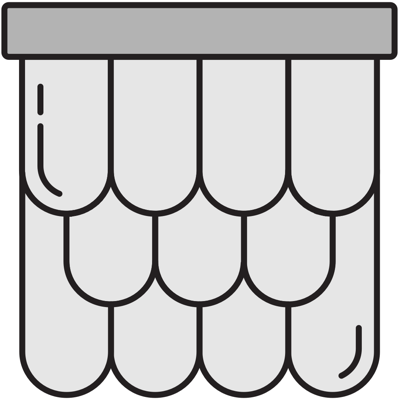
|
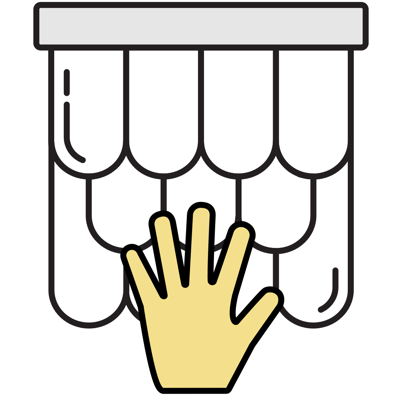
|
The Roof Surface
What is the material and how old?
Roof Observations
Do uou see lifting? Granular loss? Seperation? Deterioration? If it looks wrong it probably is.
|
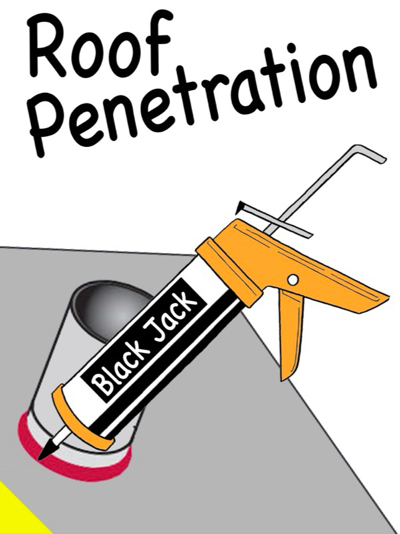
|
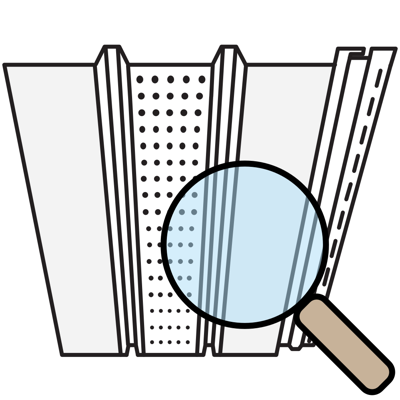
|
Roof Utility Penetrations
Used in roof assemblies to allow outside air to enter or exit. Such as vents, stacks, flues & others. Perform annual inspections.
Soffit
Keep clean & free of debris like vegetation. A very important facet of the home!
|

|

|
Inside Gutter
These will be hard to see… but hopefully they’re not stuffed with leaves.
Fascia
Whats the material? Is it rotting?
|

|
*Roof Information’
The roof is one of the most expensive components of a home, and also one of the easiest to overlook—so don’t. Start by walking the perimeter and looking up at the overall shape: does it appear straight and even, or are there noticeable dips, waves, or sagging? That could mean structural issues or poor framing. Look at the shingles—are they lying flat and evenly colored, or are there bald spots, curling edges, missing tabs, or patches that don’t match? These are signs of age, repairs, or wind damage. Flashing (the metal around chimneys, vents, and valleys) should be intact and tight to the surface—no gaps, rust, or lifted edges. While you’re at it, check the gutters: are they overflowing with granules from the shingles? Excessive granules mean the roof is likely reaching the end of its life. Look for moss or heavy staining—moss traps moisture, and dark streaks could indicate algae or poor attic ventilation. From inside the attic, scan for daylight poking through, water stains, or mold. If it’s a flat or low-slope roof, be extra cautious—these are more prone to drainage issues and ponding water. Lastly, ask about the roof’s age and whether any warranty information is available. Even if the surface looks fine, if it’s pushing 20+ years, you should budget for replacement. A healthy roof is essential for protecting the entire home, so don’t skip it—what you see up there often reflects the overall care and quality of the home.
|
|
| E |

|
Detailed Section Overview
If this report was completed by a certified inspector, you would want to keep an eye on these two dots throughout the report.
|
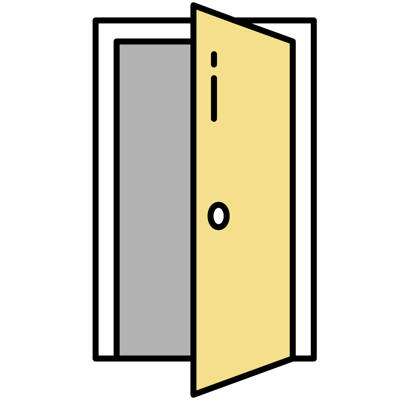
|
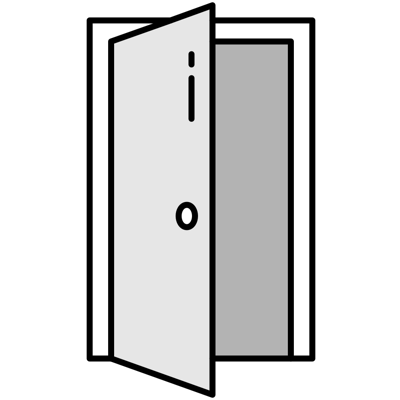
|
Front Entry
Check the operation. Is it rubbing? Binding? Hows the weather stripping? The threshold? The hinges and the lock?
Back Entry
|

|

|
The Windows
Do the operate smoothly? The locks? Look for condensation (blown seal) between the panes. How old are they?
Basement Windows?
Are they Egress? Are they single? Double? Triple?
|
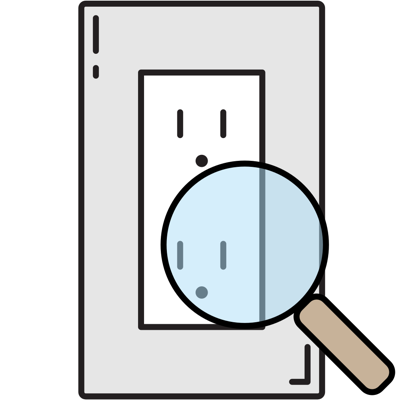
|
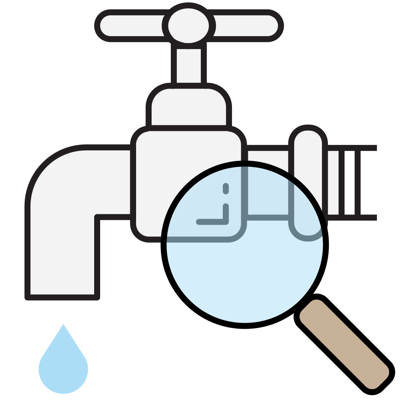
|
Exterior Outlet
Are they GFCI protected?
Exterior Faucet
Is it secure? Does it function? Is it near a window well?
|

|
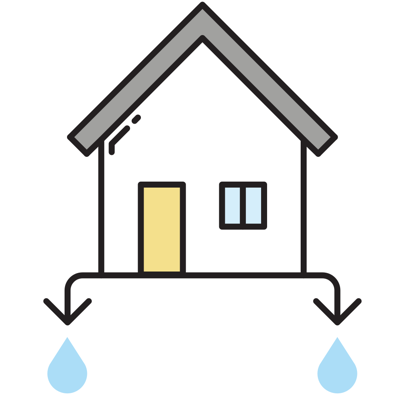
|
Exterior Cladding
Here is the primary protective layer between your home & the external elements.
Grading
Uneven land prevents proper water drainage, & during rainfall, water can flow towards the home rather than away.
|

|

|
Downspouts
Look for damage
Pathway Material
Look for heaving and tripping hazards
|
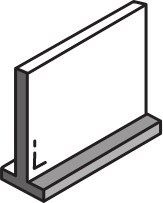
|

|
Front Foundation
She bares the weight of the entire house. Look for cracks? Diagonal? Vertical? Horizontal… these would considered BAD!
Back Foundation
|

|
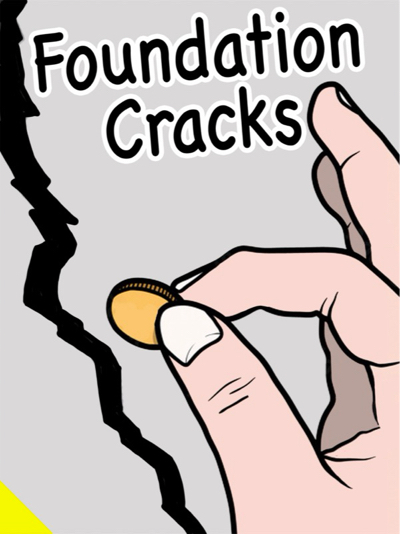
|
Side Foundation
About Cracks
If two dimes can fit into the crack, get it checked by a structural engineer. Minor fractures can be repaired with a mastic.
|
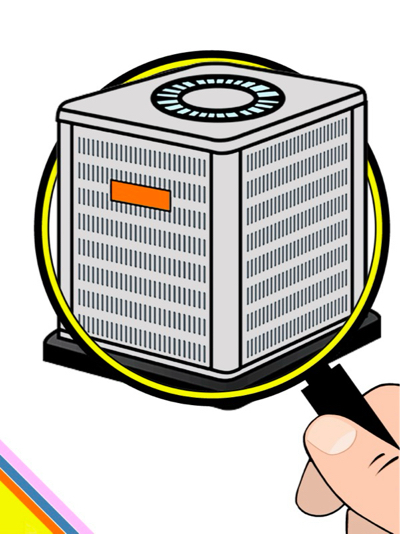
|

|
AC Page
Maintain your AC, & you’ll not only save money on energy, but you’ll also extend its lifespan, saving money on costly early replacement
Name Brand
When was she born?
|
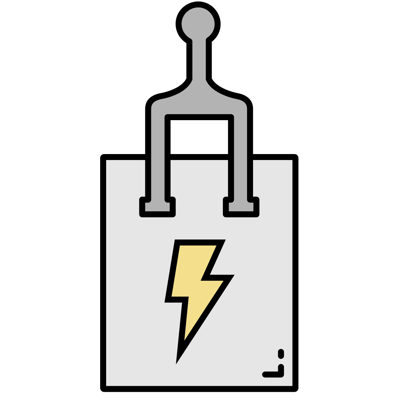
|

|
AC Disconnect
This is safety code… make sure you have one!
AC Data Plate
Here contains a unique model & serial number.
|

|
AC Air Conditioner
Look her over… does it come wiyh a vover? When was it serviced last? How are the fins and lines?
|
|

|
*Exterior Monthly List’
When inspecting the exterior of a home, start with the big picture—walk the perimeter slowly and look for anything that seems uneven, leaning, or out of place. Check the siding or cladding for cracks, damage, missing pieces, or signs of water staining. Look closely around windows and doors—peeling caulking, soft wood, or gaps can allow moisture in and lead to rot or mold. Examine the foundation walls for cracks; small hairline ones are common, but wider, stair-step, or horizontal cracks may need further evaluation. Grading is key—soil should slope away from the home so water doesn’t pool against the foundation. Downspouts should discharge several feet from the base of the house and not just drop water beside it. Look at decks and stairs: Are they level, solid, and properly attached to the house? Loose railings or wobbly steps can be a safety issue. Inspect the roof edge from the ground—missing shingles, sagging gutters, or fascia damage can hint at bigger problems above. Check the driveway and walkways for cracks, settling, or tripping hazards. Around vents, meters, and utility lines, ensure all penetrations are sealed with no gaps where pests or water can enter. If there’s a chimney, look for leaning, missing mortar, or crumbling brick. Lastly, stand back and ask yourself: does the exterior feel maintained and cared for, or neglected and patched together? What you see outside often reflects the care (or lack of it) inside.
|
|
| G |

|
Detailed Section Overview
If this report was completed by a certified inspector, you would want to keep an eye on these two dots throughout the report.
|

|

|
Garage Motor • Control
What’s the make and model? How old is it?
Garage Safety Sensors
These are at the bottom of the track. Make sure they work! Use uour foot to disrupt the laser when operating.
|
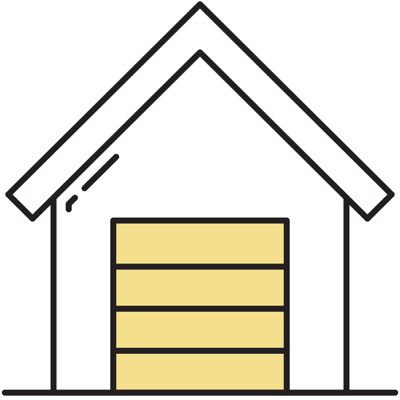
|
Garage Door
Has anyone backed up into it? How does the hardware look? How are the tracks and ball bearings? How’s the chain and drive?
|
|

|
*The Garage’
often hides more than they reveal at first glance, so take your time. Start with the door: does it open smoothly and close fully? Test the automatic opener and especially the safety reverse feature—place a small object like a piece of wood under the door and see if it reverses when closing. Missing or faulty sensors at the base of the door can be a major safety issue. Look at the ceiling and corners for signs of water staining, mold, or rodent entry—especially in older homes. The floor should slope slightly toward the overhead door for drainage, and large cracks or heaving can signal foundation movement. Check the fire separation wall between the garage and the house—this should be fully drywalled and free of holes, with a solid-core or steel door that closes automatically. If the garage is heated, look for proper ventilation and ensure that any gas appliances have appropriate clearances. Exposed electrical wiring, missing junction box covers, or overloaded outlets are all red flags. If there’s an attic hatch, check that it’s insulated and sealed to prevent heat loss. Finally, scan for storage hazards: gas cans, propane, paint, or chemicals stored near ignition sources like a water heater or space heater are common safety concerns. A clean, well-maintained garage is more than a place to park—it’s often where problems quietly start.
|
|
| H |

|
Detailed Section Overview
If this report was completed by a certified inspector, you would want to keep an eye on these two dots throughout the report.
|

|

|
Carbon Monoxide Test
If you got a Fire Fighter friend, you might be able to borrow one of their detectors. You’re looking for 0 ppm.
Moisture Test
Moisture metres are not that expensive. Make sure to check the usual suspects at Windows and Doors. Or any stains you see along the way
|
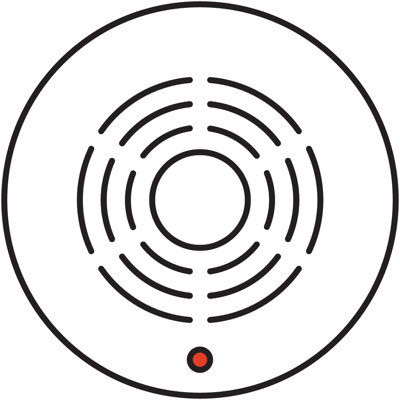
|
Smoke Detector
Just make sure they’re not ancient. If they’re expired, you’re gonna want to replace those if you end up buying this home
|
|

|
*Health & Safety’
checks are some of the most critical—and often the most overlooked—parts of evaluating a home. Start with smoke detectors: there should be one on every floor, inside each bedroom, and in hallways outside sleeping areas. Test them by pressing the button, and check the manufacture date—anything over 10 years old should be replaced. Carbon monoxide (CO) detectors are just as important, especially if the home has gas appliances, a fireplace, or an attached garage. Make sure there’s at least one on every sleeping level, ideally plugged in or mounted near bedrooms. Look for a fire extinguisher in the kitchen or utility area, and make sure it’s not expired or damaged. Check for handrails on stairs—especially basement or exterior steps—and confirm they’re sturdy and graspable. Look for tripping hazards like loose rugs, uneven thresholds, or missing stair nosings. Electrical safety matters too: confirm GFCI outlets are installed in kitchens, bathrooms, and exterior areas by pressing the “test” button (they should click off and reset). In older homes, watch for extension cords being used as permanent wiring or exposed splices in basements and garages. Check that windows in bedrooms open easily in case of emergency and aren’t sealed shut with paint or caulking. If there’s a fireplace or wood stove, look for cracks, signs of creosote, or missing spark arrestors. Safety systems can be small details—but in emergencies, they matter most.
|
|
| I |

|
Detailed Section Overview
If this report was completed by a certified inspector, you would want to keep an eye on these two dots throughout the report.
|
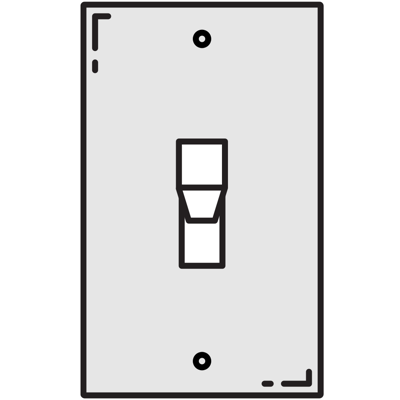
|

|
Switches
You won’t get to test them all, but let’s just make sure they’re functioning
Interior Lights
|
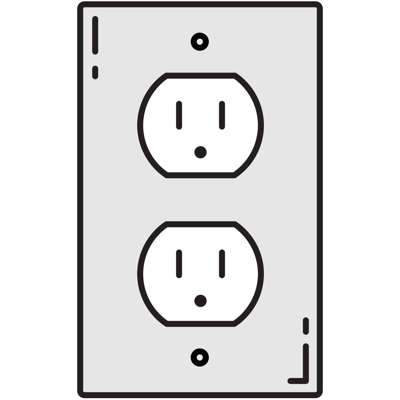
|
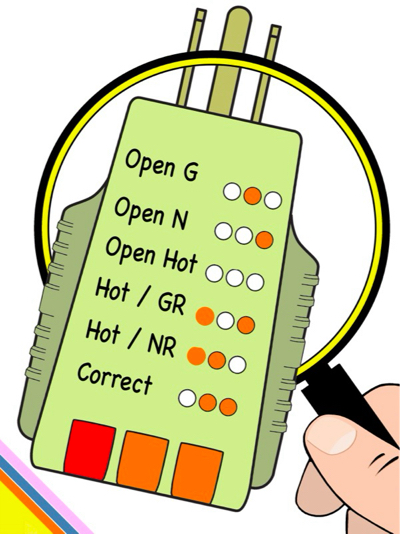
|
Outlets
Plug testers are relatively inexpensive. Bring them with you and test and fuel along the way.
Plug Tester
Used to confirm if an outlet or plug is wired correctly.
|

|
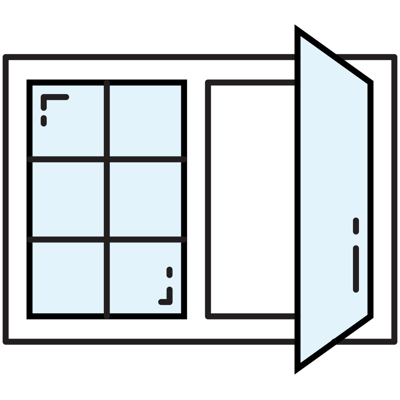
|
Interior Window
Use the crank or open a few up and down and make sure there’s good smooth operation.
Open Window
Check for microbial growth or plugged we holes
|

|
*Interior Notes’
When inspecting the interior, your goal isn’t just to admire finishes—it’s to look beneath them. Start with the floors: walk slowly and feel for sloping, springiness, or soft spots, which can signal structural or subfloor issues. Look at ceilings and upper walls for cracks, water stains, or signs of patchwork—these might indicate past leaks or settling. Open and close interior doors—sticking, misalignment, or gaps at the top or bottom can be signs of shifting or poor framing. Check windows for proper operation, signs of condensation between panes, or water damage on sills and trim. In bathrooms and kitchens, look under sinks for leaks, water damage, or mold. Run the taps and check water pressure—low flow might point to clogged lines or old plumbing. Look at exhaust fans in bathrooms and kitchens—do they actually work and vent outside, or are they just noisy? Pay attention to smells—musty odors often mean moisture issues hiding in walls or floors. If the home has been recently painted or renovated, look closely for uneven patches or unusual texture changes that could be hiding something. Take your time—homes are staged to look nice, but a smart buyer looks beyond the surface.
|
|
| K |

|
Detailed Section Overview
If this report was completed by a certified inspector, you would want to keep an eye on these two dots throughout the report.
|
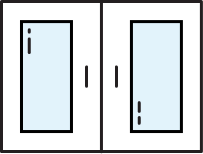
|
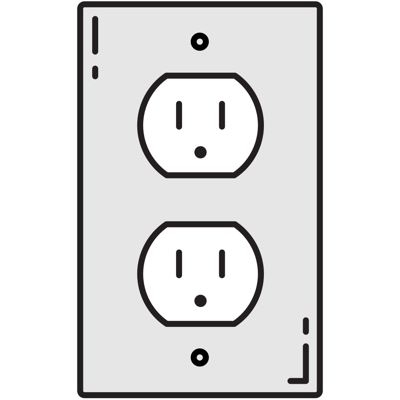
|
Kitchen Cabinets
Just check for General operation. Nice and dings. See if they’re out of level.
Kitchen Outlets
Make sure these are GFCI protected
|
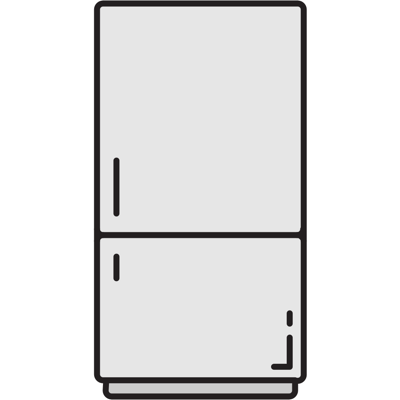
|
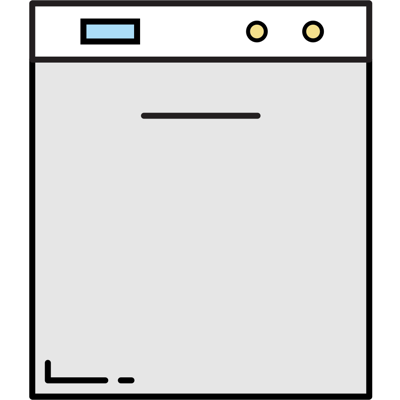
|
The Fridge
Check to make sure it’s level and the seal is good
Dishwasher
Check the filter, the racks and the seal
|
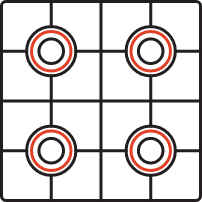
|

|
Stovetop
I’m not sure if you’re allowed to turn on other people stoves when you’re looking at a house but just look for anything unusual
The Oven
Same on the inside of the oven
|

|
Microwave
Just give it a once over
|
|
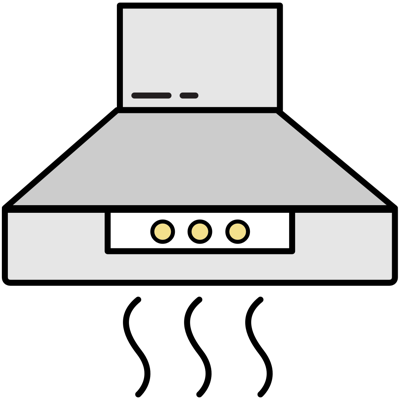
|
Hood Fan Control
I don’t think anyone would mind if you turn on the lights in the fan
|
|

|
The Kitchen Sink
Just check for functionality and feel for leaks
|
|

|
Plumbing P-Traps
Other stains beneath or any signs of moisture? Look for mouse droppings underneath the cabinet while you’re there.
|
|

|
*Kitchen Safety’
The kitchen is one of the most used (and most expensive) spaces in a home, so it deserves a closer look. Start by opening every cabinet and drawer—check for water staining, moldy smells, or signs of pest activity under the sink. Run both the hot and cold water, check the pressure, and look underneath for active leaks or corrosion around plumbing. Test the GFCI outlets by pressing the “test” and “reset” buttons—especially near the sink and any appliances. Turn on the range hood or microwave fan—make sure it works and ideally vents outside, not just back into the room. Check that all appliances power on, and listen for grinding or unusual noises in dishwashers or fridge compressors. If it’s a gas stove, make sure the flame burns clean and blue—not yellow or erratic. Look at the counters and backsplashes for gaps, cracks, or water damage. Gently press along the base of cabinets near dishwashers and sinks—soft or warped materials may indicate long-term moisture problems. Look at the ceiling and upper corners for grease build-up or signs of poor ventilation. A beautiful kitchen can be deceiving, but close inspection helps you see whether it’s been well cared for—or just quickly touched up for sale.
|
|
| L |

|
Detailed Section Overview
If this report was completed by a certified inspector, you would want to keep an eye on these two dots throughout the report.
|
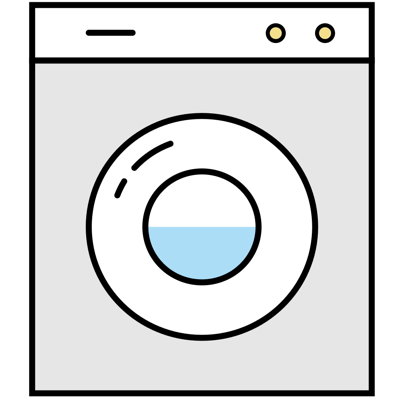
|
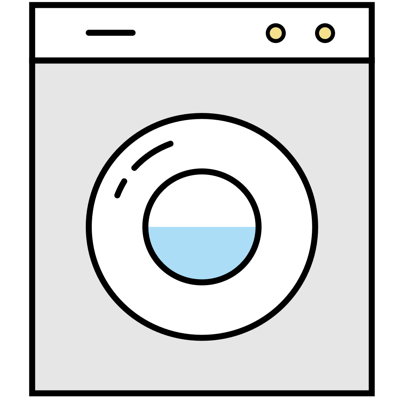
|
Laundry Washer
Inside The Washer
Check the seal for microbial growth
|

|

|
Laundry Dryer
Inside The Dryer
Check the lint trap
|
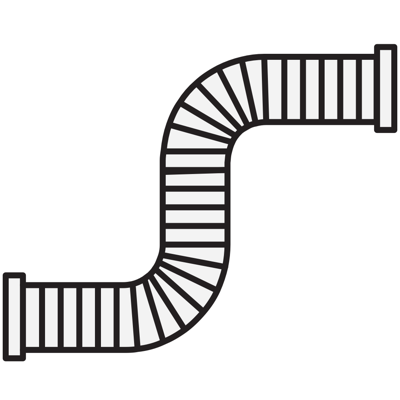
|

|
Dryer Exhaust
Check for lint buildup and disconnections
Laundry Water Lines
Check for leaks
|

|
*Laundry Stuff’
The laundry area may seem simple, but it’s a common source of water damage, fire risk, and maintenance headaches. Start by locating the washer hookups—look for signs of past leaks like rust, staining, or bubbling drywall behind or beneath the valves. If the machine is present, gently move it to check the condition of the floor—soft spots or warping around the drain can indicate previous overflows. Make sure there’s a floor drain nearby (especially in upper-level laundry rooms) and that it’s not clogged or dry. For the dryer, inspect the vent—ideally it vents directly outside with rigid metal ducting, not a flexible plastic hose, which is a fire hazard. Check the exterior vent cover too—lint build-up or stuck flaps reduce airflow and pose safety risks. In homes with stacked or enclosed units, ensure there’s enough ventilation to prevent heat and humidity build-up. Finally, check that the laundry area is on a GFCI circuit, especially if it’s near a sink. A tidy space with clean lines, proper hookups, and safe venting tells you this essential area has been maintained—not just masked.
|
|
| B |

|
Detailed Section Overview
If this report was completed by a certified inspector, you would want to keep an eye on these two dots throughout the report.
|
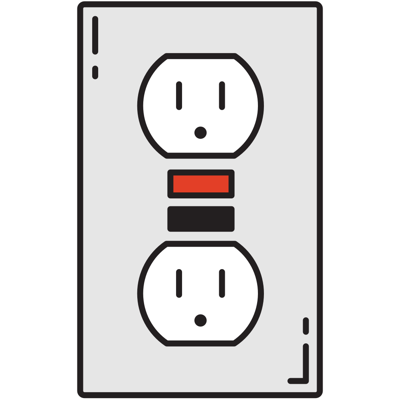
|
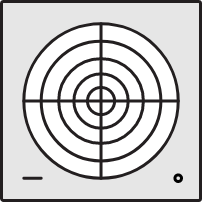
|
The Bathroom GFCI
Make sure that you have GFCI protection not just razor plugs
Bathroom Fan
Check for general operation, see if the toilet paper will stick
|
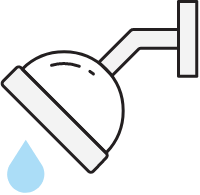
|

|
Shower Head
Look for leaks in water pressure
Shower Drain
See if the water is pooling, check for cracks in the floor and smell for odours
|

|

|
Bathroom Faucet(s)
Check for temperature variance, leaks, and maybe getting an eye on the aerator
Bathroom P-Trap
Are there any signs of moisture damage to the cabinet beneath. Feel the P-trap for stability and leaks.
|
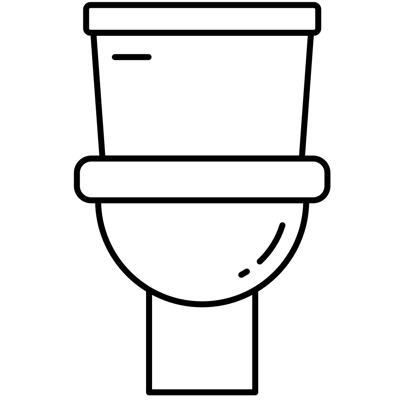
|
Toilet
Does it function? Is it wobbly?
|
|

|
Giver a FLUSH!
|
|

|
*Best Seat In The House’
Bathrooms are high-risk areas for hidden damage, so take your time here. Start with the floor—look for cracked tiles, soft spots, or staining around the toilet, tub, and shower, which may indicate leaks or water intrusion. Gently press around the base of the toilet and tub surround—any movement or sponginess is a red flag. Turn on the taps and check water pressure and temperature consistency. Watch for slow drains, which could mean clogs or poor venting. Look under the sink for signs of leaks, corrosion, or mold, especially around pipe joints. The fan should work and ideally vent outside—fogged mirrors or musty smells could point to poor ventilation, which leads to long-term moisture problems. Tiles and caulking around tubs and showers should be clean and intact—missing or moldy grout can allow water to seep behind walls. Check the toilet for movement and listen for constant running, which may point to worn internal parts. Finally, test the GFCI outlets by pressing the “test” button—they should trip and reset properly. A bathroom might look clean on the surface, but careful inspection can reveal the real story of how the home has been cared for.
|
|
| M |

|
Detailed Section Overview
If this report was completed by a certified inspector, you would want to keep an eye on these two dots throughout the report.
|

|

|
FYI Panel Clearance
requires a clear area for access & work that is (30”) wide, (36”) deep, & (78”) high. Depending on where you live.
Electrical Safety
Main & sub panel boxes should always be secured & worked on by certified tradespeople.
|

|

|
Electrical Panel
Is it a full panel? What’s the make and model? Is it a stablok? Take a photo and share it with one of your Electrician friends
The Main Breaker
It should be a minimum of 100 amp breaker. Anything below that in your insurance company may have an issue with that
|

|
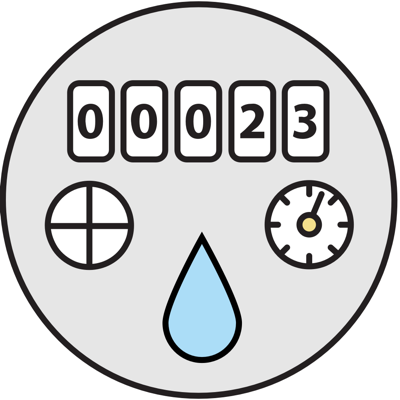
|
The Water Main
You’ll want to know the location. Is it a ball valve or a gate valve?
Water Meter
Do you have one? If not is there a certificate of occupancy?
|

|

|
Exterior Water Shutoff Valve
Important to know the locations
What kind of water lines?
Beware of Poly B and Kitec!
|
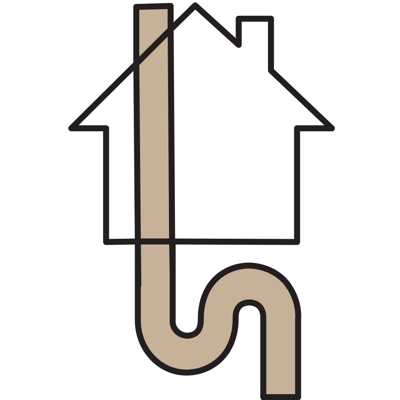
|

|
Type of sewer line?
ABS is black plastic. Cast Iton can be problematic
Main Drain
Just make sure you have one!
|
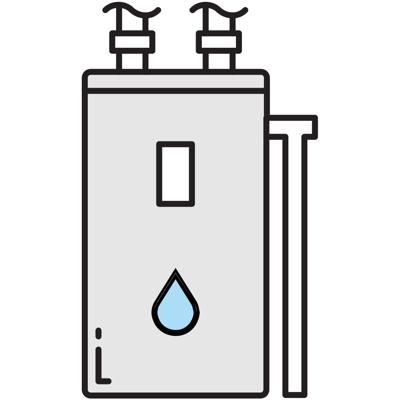
|

|
The Hot Water Unit
What kind? Is it big enough?
Hot Water Data Plate
When was she born?
|

|

|
Main Heating Unit
What kind and is it big enough to handle this home?
Heating Unit Data Plate
How much life does she have left?
|

|
The Mechanical Room
is often overlooked, but it’s one of the most important areas to check when evaluating a home. Start by looking at the furnace or boiler—note the age, visible rust, corrosion, or water staining. A clean, well-maintained unit says a lot, while clogged filters, burn marks, or leaks can signal neglect. If there’s a vent pipe, check that it’s secure and free of rust. Move on to the water heater—look for the manufacture date (most last 8–12 years), any rust at the base, and whether there’s a drain pan and overflow pipe. For tankless models, make sure there are no error codes and the unit looks professionally installed. Find the main water shut-off valve and gently test if it turns. Corrosion or calcium buildup at joints could mean leaks or poor water quality. Check if there’s a floor drain nearby—it should be clear, not musty, and ideally tested by pouring in a bit of water to ensure it drains properly. If the electrical panel is in the same room, look for any rust, signs of overheating, double-tapped wires (two wires into one breaker), or messy labeling. Scan the room for general signs of care—mold on walls, musty smells, scattered tools, open junction boxes, or random wires are all clues. A clean, labeled, and organized space usually reflects pride in ownership. If anything looks DIY or slapped together, consider having it reviewed. A mechanical room gives insight into how the rest of the home is maintained—treat it like a report card.
|
|
insurance
| Overview | |
| Build Year | When was it built? |
| Outdoor Temperature | Rainy days are bad for Inspections |
| Direction Home Faces | Refer to listing details |
| Vacancy | Is this a rental? |
| Furnished | What is obstructing this inspection? |
| Roof | |
| Inspection Limitations | This is for the Inspector |
| Approximate Age | A simple question to ask the sellers |
| Roof Material | Your insurance company will want to know |
| Gutter Material | Is it properly graded? |
| Fascia Material | Is it wood? Is it metal? Is it smart panel? |
| Soffit Material | Is it perforated? Good ventilation? |
| Exterior | |
| Inspection Limitations | This is for the Inspector |
| Driveway / Walkway | Is it concrete? Exposed aggregate? Asphalt? |
| Window Glaze | Is it single, double, triple? |
| Flashings | Do you have step flashing, kick out? |
| Exterior Cladding | Is it stucco? vinyl? Wood? Metal? Brick? |
| Electrical Entry | Is it underground or overhead? |
| Cooling Type(s) | Do you have AC? |
| Gas Main Location | Is it inside or on the side yard? |
| Garage | |
| Inspection Limitations | This is for the inspector |
| Motor Brand | How old is it? |
| HVAC Type | What type of heating? |
insurance
| Attic | |
| Inspection Limitations | This is for the Inspector |
| Sheathing Material | Is it OSB? Is it Plywood sheathing? |
| Approx. R-Value | What’s the depth of the insulation in the attic? |
| Type of Insulation | Is it cellulose? Is it Batt? is it vermiculite? |
| Thermal | |
| Inspection Limitations | This is for the Inspector |
| Health & Safety | |
| Inspection Limitations | This is for the Inspector |
| Safety Features Present | Do you have smoke detectors? Have they expired? |
| Interior | |
| Inspection Limitations | For the Inspector |
| Thermostat Location | Is this a zoned furnace? |
| Flooring Materials | Hardwood, Tile, Carpet, cork, linoleum? |
| Wall Materials | Drywall, panel board, wood? |
| Fireplace Fuel Type(s) | But is it wood-burning? Is it gas? Hybrid? |
| Kitchen | |
| Inspection Limitations | This is for the Inspector |
| GFCIs | Do you have GFCI protection? |
| Laundromat | |
| Inspection Limitations | This is for the Inspector |
| Bathroom | |
| Inspection Limitations | This is for the Inspector |
| GFCIs | Do you have GFCI protection? |
insurance
| Mechanical | |
| Inspection Limitations | This is for the Inspector |
| Main Electrical Location | Is it on the side yard? At At the garage? |
| Main Amp | It should be at least 100 amp. Is it? |
| Wiring Material | Is it copper? Is it aluminum? Is it knob and tube? |
| AFCI Breakers | Do you have arc faults? |
| System Ground | Is the house grounded? |
| Electrical Bonding | Is the house bonded? |
| Heating Type(s) | What is the heating? Furnace? Boiler? Hydronic? |
| Heating Fuel | Is it gas? Is it Oil? Is it electric? |
| + Heat Source | Do you have baseboard heaters or any other? |
| Water Supply Source | Is it public or private? |
| Water Main Location | Where is it? |
| Hot Water Type(s) | Is it on demand or a tank? |
| Ext. Water Shut-Offs | It’s important to know the location of these |
| Water Line Material | Is it Poly-B? Kitec? Is it PEX? Is it copper? |
| Sewer Material(s) | Is it ABS? Is it cast-iron? |
| Main Drain | Important to know location |
| Backwater Valve | Your insurance company will want to know |
| Sump Pump | Where is it? Does it work? |
| Waste Lift Station | Where is it? Does it work? |
| Structure | |
| Inspection Limitations | For the Inspector |
| Foundation Type | Is it concrete? Is it Wood? Is it Block? |
| Structure Type | Is it engineered? Is it dimensional? |
| Roof Structure | Is it a trust system? Is it a rafter? |
| Walls Structure | Is it 2 x 4 or 2 x 6? |


